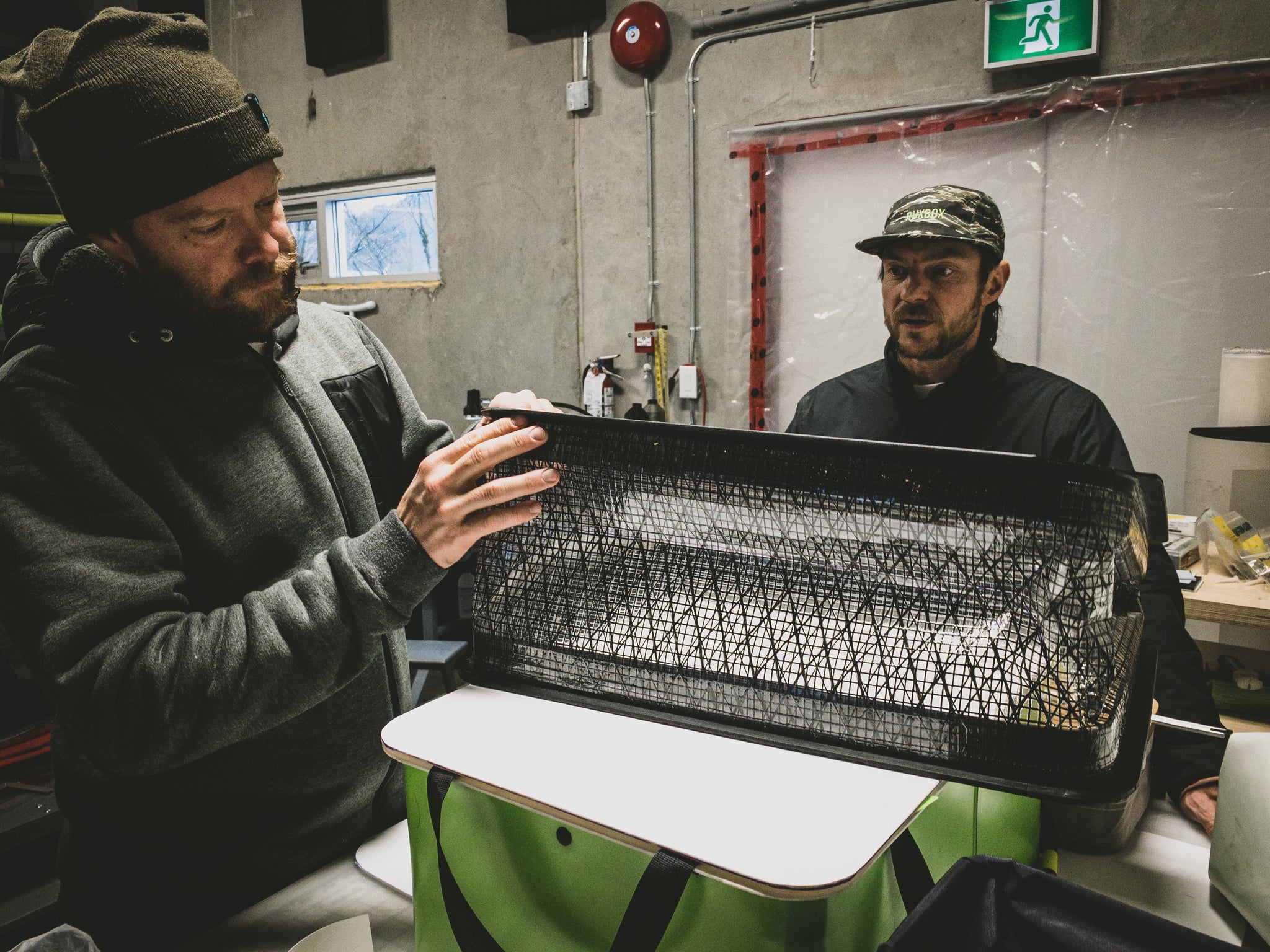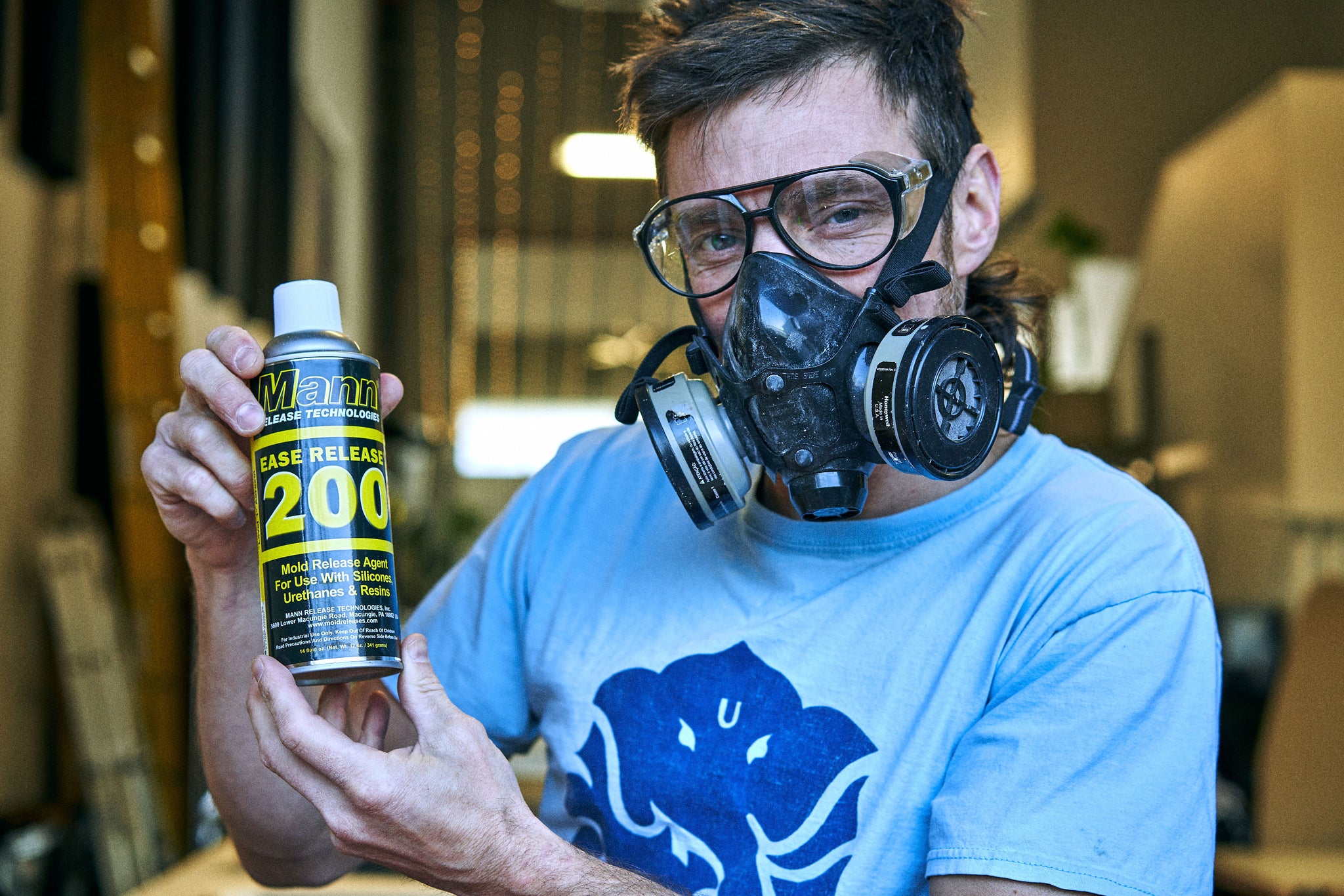The problem with trying to make something new is that it could be anything. A better designer than me would probably sit down and draft up some sort of brief for the project and not get stuck in this phase of navigating rabbit holes. I’m not that disciplined. Now that I’d made a mess in my head, it was time to sort through it all. This stage is tough, because you don’t want to put any limits on the potential of what this thing could be. Pursuing every idea means the amount of experiments and testing quickly becomes exponential. I think of it as design due diligence, where there are no bad ideas, so you have to explore every one as if it might be the way forward. (Photos by Julian Kenchenten)

I knew that RUX had to be designed for mass production. I’m familiar with fabric and sewing, which is handy because it’s quite easy to prototype in, but from the inception I knew RUX was going to involve other materials and processes that I don’t know anything about. So I just had to start somewhere.
My first rabbit hole was plastic. I started trying to make my own rims using various plastic resins. Tediously making moulds, measuring and pouring the chemicals, then waiting for it to set, only to discover the plastic was too brittle, soft or weak. This got old fairly quickly.


Lucky for me, the cool thing about the modular nature of RUX was that I could simultaneously be experimenting with the other parts of the system. The fabric component was fairly straight forward. I basically needed a tube of fabric I could fit around the different rims I’d built, yet the rabbit hole struck again. I ended up experimenting with so many different materials from canvas to carbon fiber sailcloth, vinyl, tarps and even crazy carpet. I tried adding different baffles and stiffeners to help it stand or collapse in a controlled way. In the end I was reminded that simplicity always wins, because simply putting a slight radius in the corner was quite an effective way to prop up the bag.

Every time I emerged from a hole, there was a new one taunting my curiosity. I started playing with different types of lids, handles, and accessories, opening a rabbit hole that’ll stick with me for many weeks to come.
All the while, our commitment to a legitimately sustainable product design has consumed me with a rabbit hole of its own. I became obsessed with the idea that every piece of the RUX should come apart to make the product repairable, replaceable and recyclable. The idea of not bonding, sewing or co-moulding parts and different materials together became a design constraint I continue to toil with daily. But this one is worth it. There’s no point in making a new product out of partly recycled ‘green’ materials if you’re just building an unrepairable, un-recyclable item that’s destined for the landfill sooner or later.
Slowly, the pieces of the puzzle started falling into place, jostling for position in the priority line. The next phase is gonna be a wildly rewarding one…

When in doubt, "Mann Ease Release 200" is always there to help.




Comments
Really cool piece Tonz! “Design Du Diligents”. I like that 👌
Cool to have a peak into your process. Can’t wait for the final product!